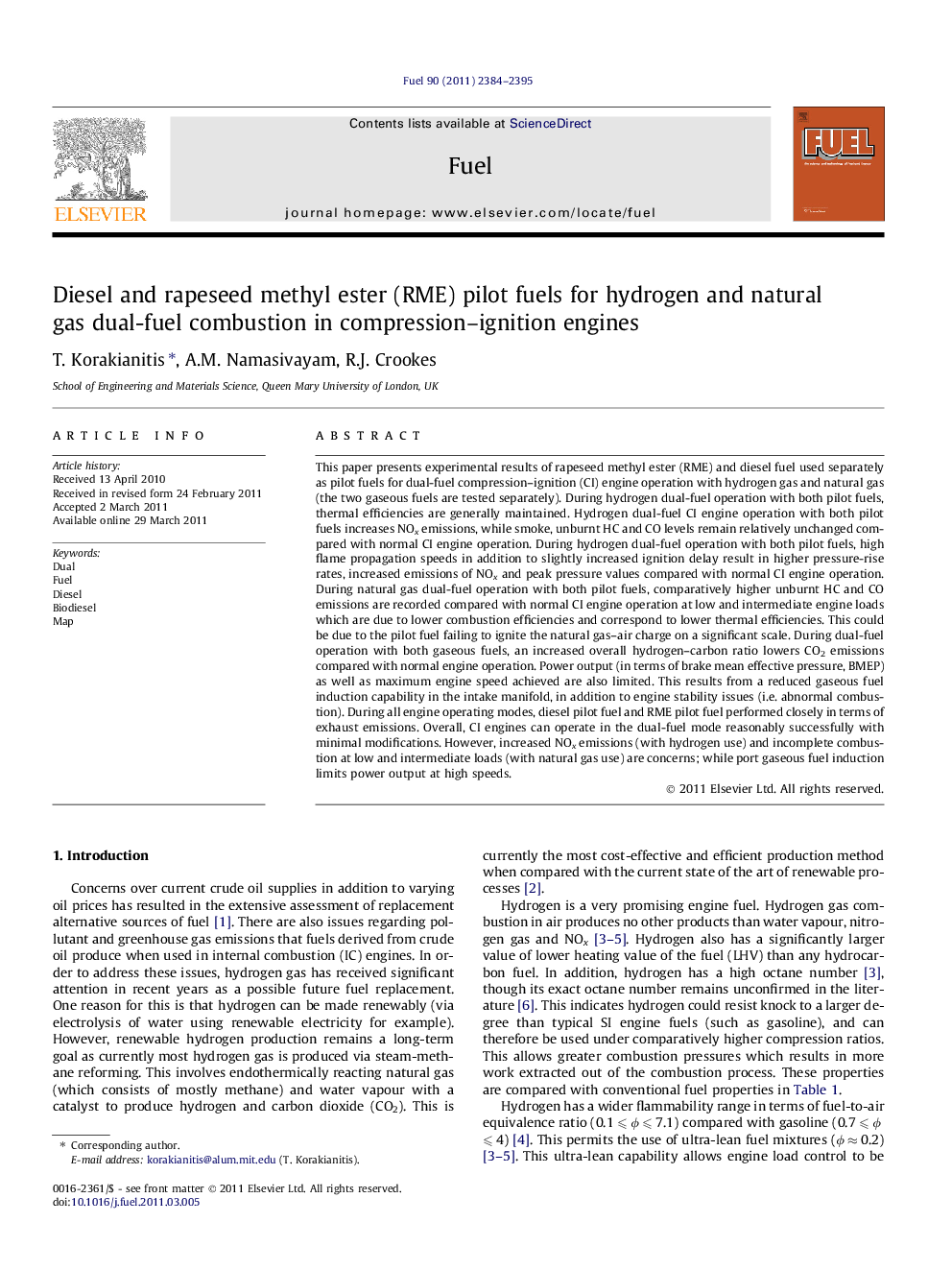| کد مقاله | کد نشریه | سال انتشار | مقاله انگلیسی | نسخه تمام متن |
|---|---|---|---|---|
| 206505 | 461189 | 2011 | 12 صفحه PDF | دانلود رایگان |

This paper presents experimental results of rapeseed methyl ester (RME) and diesel fuel used separately as pilot fuels for dual-fuel compression–ignition (CI) engine operation with hydrogen gas and natural gas (the two gaseous fuels are tested separately). During hydrogen dual-fuel operation with both pilot fuels, thermal efficiencies are generally maintained. Hydrogen dual-fuel CI engine operation with both pilot fuels increases NOx emissions, while smoke, unburnt HC and CO levels remain relatively unchanged compared with normal CI engine operation. During hydrogen dual-fuel operation with both pilot fuels, high flame propagation speeds in addition to slightly increased ignition delay result in higher pressure-rise rates, increased emissions of NOx and peak pressure values compared with normal CI engine operation. During natural gas dual-fuel operation with both pilot fuels, comparatively higher unburnt HC and CO emissions are recorded compared with normal CI engine operation at low and intermediate engine loads which are due to lower combustion efficiencies and correspond to lower thermal efficiencies. This could be due to the pilot fuel failing to ignite the natural gas–air charge on a significant scale. During dual-fuel operation with both gaseous fuels, an increased overall hydrogen–carbon ratio lowers CO2 emissions compared with normal engine operation. Power output (in terms of brake mean effective pressure, BMEP) as well as maximum engine speed achieved are also limited. This results from a reduced gaseous fuel induction capability in the intake manifold, in addition to engine stability issues (i.e. abnormal combustion). During all engine operating modes, diesel pilot fuel and RME pilot fuel performed closely in terms of exhaust emissions. Overall, CI engines can operate in the dual-fuel mode reasonably successfully with minimal modifications. However, increased NOx emissions (with hydrogen use) and incomplete combustion at low and intermediate loads (with natural gas use) are concerns; while port gaseous fuel induction limits power output at high speeds.
Research highlights
► Hydrogen and natural gas are tested as fuels in compression ignition engines in the dual fuelling mode, where the gaseous fuels are ignited by diesel and rapeseed methyl ester (RME).
► Engine performance and emissions are compared in various operating conditions.
► Overall, CI engines can operate in the dual-fuel mode reasonably successfully with minimal modifications. However, increased NOx emissions (with hydrogen use) and incomplete combustion at low and intermediate loads (with natural gas use) are concerns; while port gaseous fuel induction limits power output at high speeds.
Journal: Fuel - Volume 90, Issue 7, July 2011, Pages 2384–2395